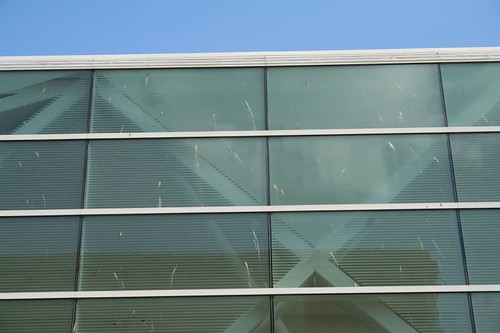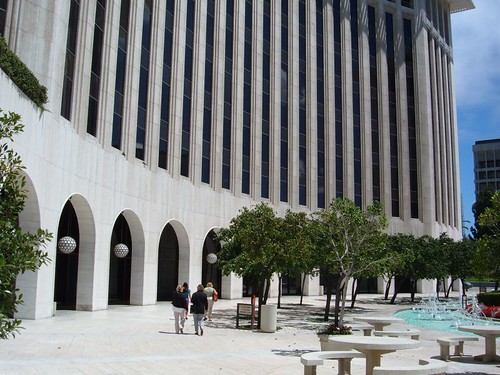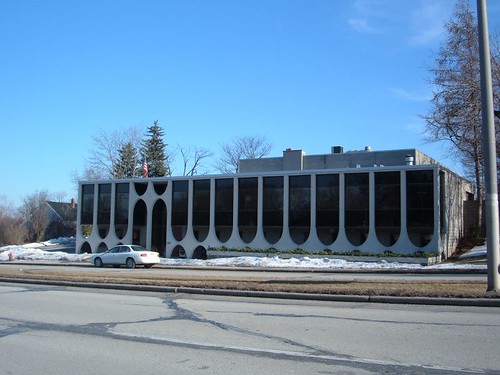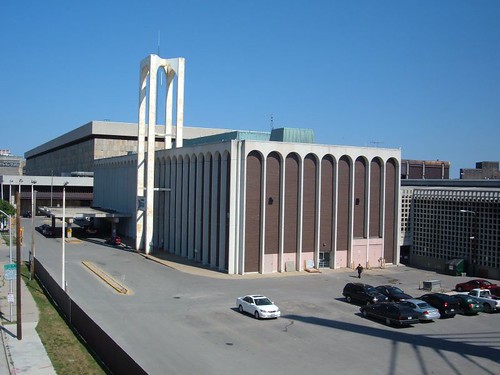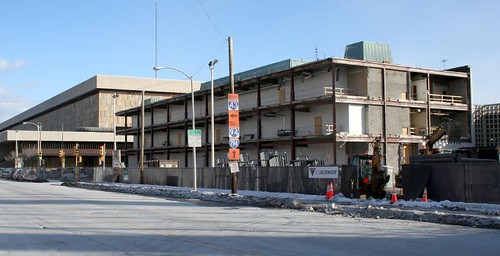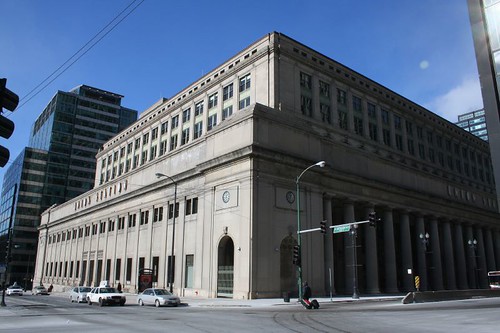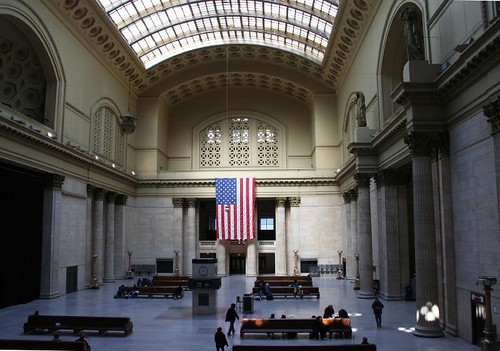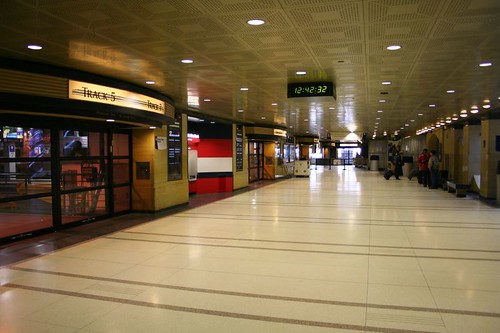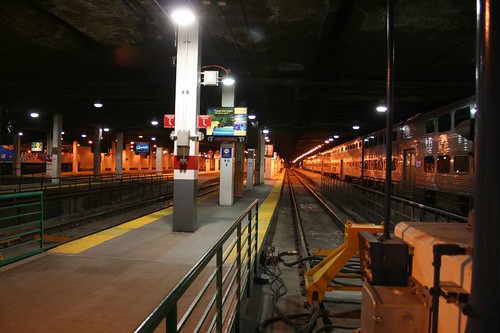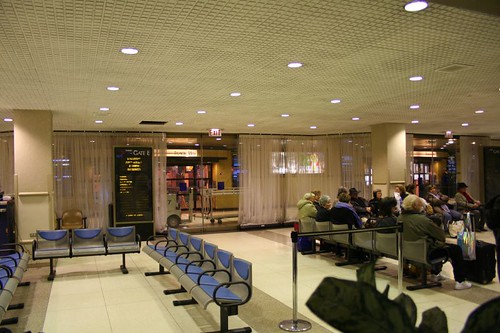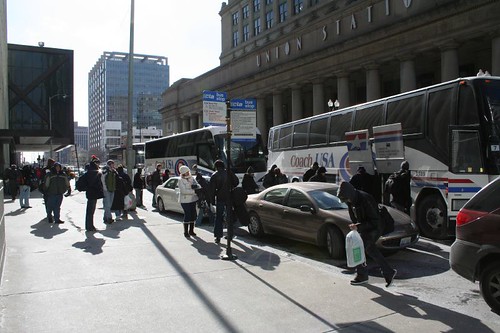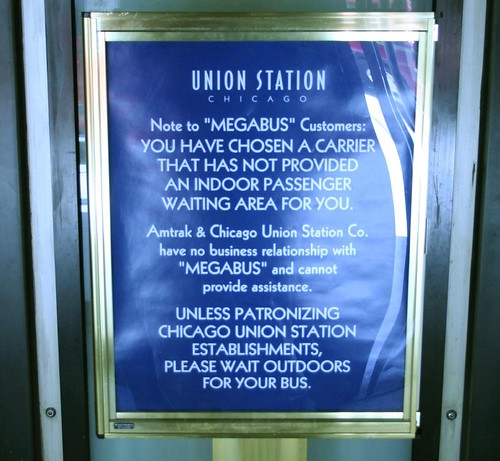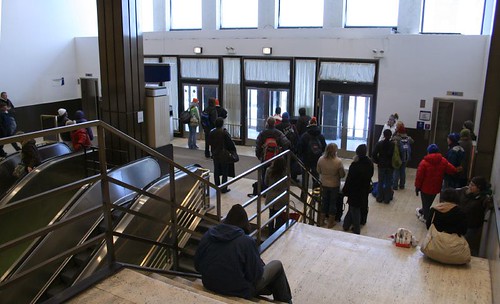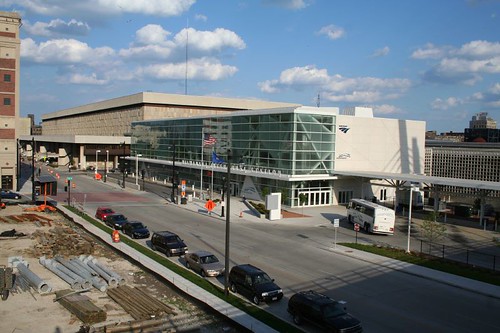
I recently visited the spacious new waiting room of Milwaukee's remodeled passenger depot. Perhaps "depot" is a poor choice of words, because the building no longer treats passengers like cargo. The dark and minimal waiting area has been replaced with a vast, bright and airy space.
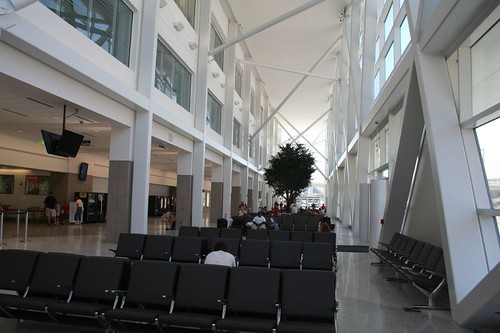
As a consequence of the narrow space available for the expansion, the waiting room features a strange set of proportions. It is as taller than it is wide, and very long, running uninterrupted for the 300-foot length of the building. The pick-up-sticks wall of angled steel box beams begs to be beheld from a distance, to be appreciated in its entirety, but it's not quite possible with the room's narrow width.
Still, it is an airy and comfortable space, open and inviting, big but not overwhelming, much like Milwaukee itself. The white color continues a trend started by several of the city's most prominent new structures: the Art Museum addition, the 6th Street viaduct, and the new Discovery World building.
Functionally, the space breaks up into three parts. The western half is used for Greyhound passengers; chairs ring a large open area. The center portion is a general dining/communal area, designated by three tall trees and round tables. The eastern half is for Amtrak passengers, and is marked by multiple rows of chairs.
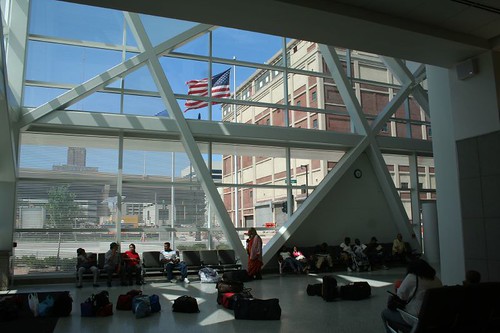
This is not a pristine space; it is of course meant filled with chairs. Several large potted trees enliven the center of the space, breaking up the room's endless length. And the crazy-quilt structure of the window wall itself suggests some of the chaos naturally associated with travel. Yet there is something clean and crisp about it, and I was disappointed to find that the management has seen fit to clutter the entire space with junk.

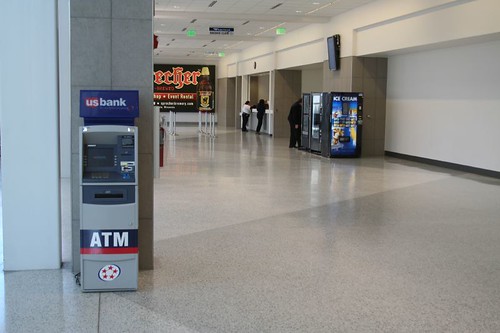
Much of this detritus was clearly not planned for, and was added after the fact. That monster game machine really should have its own dedicated space, in a game room somewhere (it makes a lot of noise as well, disturbing the peace of everyone waiting to travel.) And while trash cans and ATMs are necessary accoutrement of everyday life, there are ways to deal with them more elegantly than to jam them up against every available column.
One of those ways, for example, is to provide a dedicated alcove for objects like vending machines. It's not beautiful, but at least it gets them out of the way. And it seems that someone had this in mind... but somewhere in the planning process, the fact that vending machines require electricity wasn't accounted for. And thus, while an alcove big enough for twenty soda machines does indeed line the south wall of the waiting area, it's empty, because there's nothing to plug the machines into.
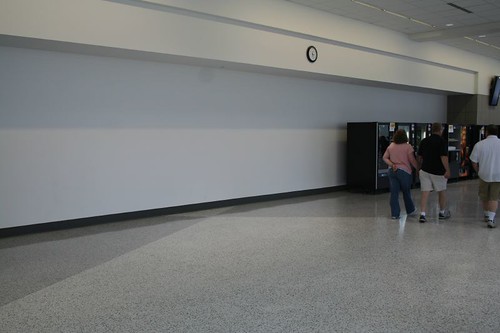
Instead, they cluster clumsily around the ends of the alcove, butting out into the concourse area, not only looking ugly in their own right but giving the space the sort of ad hoc messiness that really shouldn't be present in a freshly remodeled building. Even allowing for the mistake of not including enough outlets, one would think that fifty dollars would be available to pick up a couple of extension cords and get the machines into the alcove where they belong.
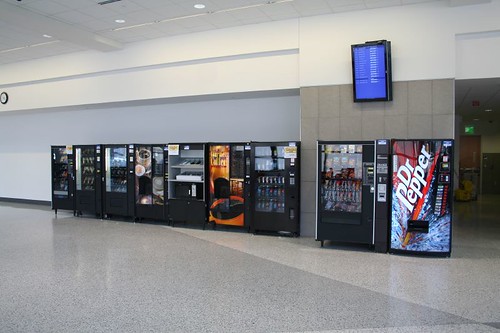
Attempts to lure a full-time restaurant to the station have not met with much success, but with this phalanx of vending machines, the station already has the equivalent of a small 7-Eleven.
My one other criticism with the station's interior pertains to the Greyhound end of the waiting area. Travel by Greyhound is a catch-as-catch-can affair; one must wait in line to be assured of getting a spot on the bus. To that end, passengers typically use their luggage as a stand-in so they can sit while waiting. The open space of the waiting area serves this need adequately, providing plenty of seats surrounding the luggage line-up that allow passengers to keep an eye on their bags. Yet it remains a chaotic solution, and I wonder if other, more elegant alternatives were explored (integrating the line with the waiting room chairs, for example, or a numbering system.)
Outside, it took a little bit of searching to locate the bike racks. They're tucked away behind the Greyhound boarding area on the building's west end, out of sight from the road (and nearly everything else.) I'm not sure how I feel about the arrangement; while it doesn't advertise the presence of locked bikes to passersby, it also doesn't seem to be a very well-watched area.
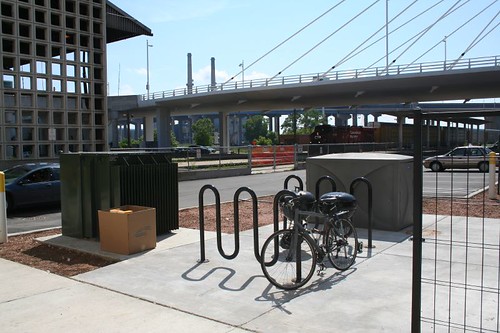
The bike racks are correctly installed, with plenty of room on all sides, and they are the multiple-U racks which are ideal for parking any type of bicycle. Having any racks at all is a great step up from the state of affairs during the renovation, and I do appreciate that bicyclists were given this thoughtful parking arrangement.
Criticisms aside, the new waiting area is a welcome addition to the Milwaukee traveling experience. Hopefully the building's management will soon relocate some of the clutter that's currently dragging down an otherwise pleasant and modern space.

